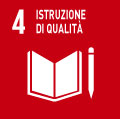- Docente: Mascia Bedendo
- Crediti formativi: 8
- SSD: SECS-P/01
- Lingua di insegnamento: Inglese
- Modalità didattica: Convenzionale - Lezioni in presenza
- Campus: Bologna
- Corso: Laurea in Economics and Finance (cod. 8835)
-
dal 17/09/2024 al 12/12/2024
Conoscenze e abilità da conseguire
This course introduces students to financial markets, financial institutions, and financial authorities. Emphasis is placed upon the economic effects of financial institutions and markets on various sectors of the economy. The course will outline the institutional structure of financial intermediation and the concerns facing the regulators and managers of these institutions. Students will also learn the transmission mechanism of monetary policy in a market based economy, the role played by market liquidity and sovereign debt, the policy tools of quantitative and qualitative easing.
Contenuti
- Function and structure of financial markets
- Interest rates and the yield curve
- Why financial institutions exist
- The role of central banks
- The conduct of monetary policy
- Money markets and interbank markets
- The bond market
- Banking and the management of financial institutions
- Risk management in financial institutions
- Bank regulation
- Financial stability and financial crises
- Other financial intermediaries
Exchange students who plan to take this course are expected to be familiar with the basic concepts of microeconomics, macroeconomics, accounting, and mathematics.
Testi/Bibliografia
Required readings:
Frederic S. Mishkin and Stanley G. Eakins, Financial Markets and Institutions, global edition, 9th or 10th edition, Pearson - selected chapters (as indicated in the slideset).
Any other material (slides, papers, etc.) that will be posted on Virtuale.
Metodi didattici
Lectures, exercises, discussion of case studies.
Modalità di verifica e valutazione dell'apprendimento
Students can take either:
(1) the mid-term exam, covering the first part of the course (one exam date in October-November) + the second partial exam, covering the second part of the course (one date to be chosen among two available exam dates between December and February); or
(2) the full exam, covering the entire material (two exam dates between December and February, one in September).
A pass grade for a complete exam (option (1) or (2)) can be rejected once only. Students who choose option (1) and wish to reject their final grade or their mid-term grade will have to resit the full exam (option (2)). All exams (partial and full) consist of a combination of multiple-choice questions and exercises. The exams are closed-book written tests. The two partial exams last 30 minutes each and account for 50% each of the overall grade. The full exam lasts 60 minutes and accounts for 100% of the overall grade. Mock exams will be provided on Virtuale.
The maximum possible score on the overall exam is 30 cum laude, in case all answers are correct, complete and formally rigorous. The grade distribution is as follows:
<18 failed
18-23 sufficient
24-27 good
28-30 very good
30 cum laude excellent
Strumenti a supporto della didattica
Course page on the platform "Virtuale", where students can find:
- Slides
- Exercises
- Mock exams
- Additional readings
Orario di ricevimento
Consulta il sito web di Mascia Bedendo
SDGs


L'insegnamento contribuisce al perseguimento degli Obiettivi di Sviluppo Sostenibile dell'Agenda 2030 dell'ONU.

